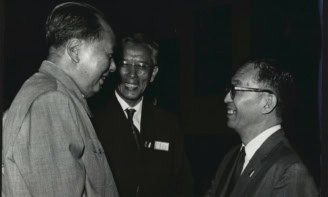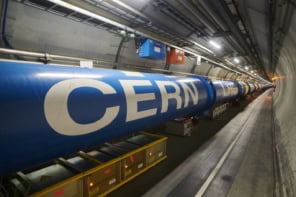A super-heavy isotope of hydrogen that has four neutrons and a proton in its nucleus has been detected for the first time. Physicists have been attempting to create hydrogen-5 - which is thought to exist inside stars - for over 40 years. An international collaboration identified the highly unstable isotope at the RIKEN detector in Japan (A Korsheninnikov et al 2001 Phys. Rev. Lett. 87 092501). Meanwhile, physicists at Brookhaven National Laboratory in the US have created a significant number of nuclei containing two 'strange' quarks. Such matter is thought to be abundant in neutron stars (J Ahn et al 2001 Phys. Rev. Lett. to appear).
Physicists from RIKEN, the JINR and Kurchatov laboratories in Russia, and the GANIL laboratory in France detected the hydrogen-5 in collisions between a beam of helium-6 nuclei and a cryogenic hydrogen target. When a helium-6 nucleus collides with a hydrogen nucleus, it can donate all four of its neutrons to the hydrogen. This leaves two spare protons that are ejected from the target as a helium-2 nucleus, which quickly decays into two protons. The energies and angles of the protons were measured by the RIKEN detector, and revealed a peak in the energy spectrum consistent with a hydrogen-5 nucleus.
In the Brookhaven experiment, a team of 50 physicists from six countries created the strange nuclei by firing an intense beam of protons at a tungsten target to create a beam of ‘kaons’ – particles that contain one strange quark. The kaons impinged on a beryllium target to create both strange quarks and antiquarks. These quarks and antiquarks can then form a nucleus consisting of a proton, a neutron and two ‘lambda’ particles. Each lambda particle contains one up, one down and one strange quark, making the nucleus ‘doubly strange’.
Around 40 such nuclei were produced in the Alternating Gradient Synchrotron at Brookhaven. “That’s enough events to begin a study using statistical techniques”, says team member Adam Rusek. The team is optimistic that their method could pave the way for accurate measurements of the forces between lambda particles. The super-dense interiors of neutron stars are probably the only places in the universe where such strange matter exists in a stable form.



